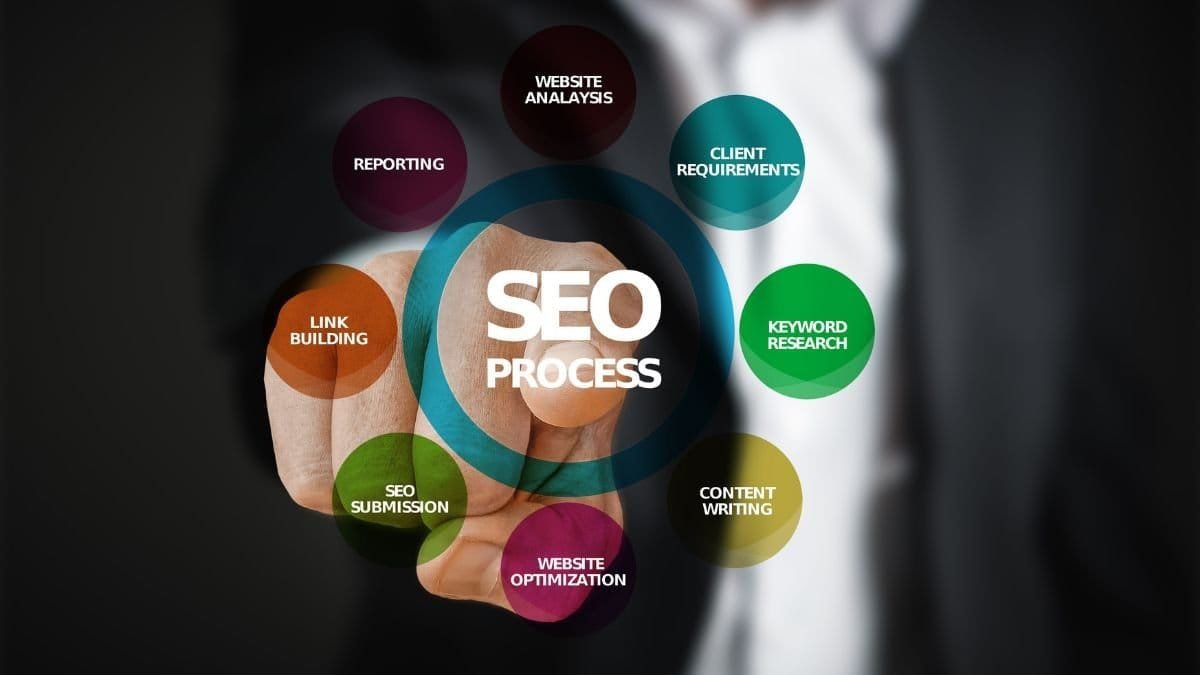This guide will help you understand Answer Engine Optimization (AEO) and how it can enhance your content for AI-driven searches. As artificial intelligence continues to evolve, optimizing for AI answers is key to ensuring that your content is visible and relevant. You’ll discover practical strategies for improving your online presence, so your audience can find the answers they seek. Let’s look into the vitals of AEO and equip you with the tools to optimize your content for the future of search.
Key Takeaways:
- AEO is all about providing direct answers: Answer Engine Optimization focuses on tailoring your content so that it can easily be picked up by AI systems and search engines looking to provide users with straight answers. Think of it as making your information snack-sized and super digestible!
- Structured data is your best friend: To get your content noticed in the world of AI answers, using structured data like schema markup is key. This helps search engines understand the context of your content. It’s like giving them a cheat sheet so they can present your information more effectively!
- Focus on user intent: Understanding what users are actually searching for is fundamental to AEO. By aligning your content with their needs and questions, you’re not just optimizing for AI; you’re also creating a meaningful connection with your audience. Ultimately, it’s about being helpful and making sure you meet your users where they are.

Understanding Answer Engine Optimization (AEO)
The rise of AI-powered search engines has led to a new form of digital marketing known as Answer Engine Optimization (AEO). AEO focuses on enhancing your content so AI systems can quickly identify and deliver accurate answers to user queries. By adapting your strategies to these technologies, you can improve your chances of being featured in answer boxes, voice search results, and more, ultimately driving higher engagement and traffic to your content.
Definition of AEO
If you’re wondering what AEO really means, it’s all about creating content that is structured in a way that AI can easily interpret and surface. It involves using clear, concise answers to common questions, enhancing the likelihood that your material will be picked up by AI-driven platforms to respond to user inquiries. Essentially, you’re optimizing for machines that prioritize direct, relevant answers.
Importance of AEO in the Digital Landscape
Now is a great time to pay attention to AEO, as it significantly impacts how users find information online. Search engines have shifted their focus from merely ranking webpages to providing users with immediate answers. This evolution means that optimizing your content for AEO can set you apart in a crowded digital space, leading to higher visibility and relevance.
This shift in user behavior underscores the importance of AEO in today’s digital landscape. With instant gratification becoming the norm, users increasingly expect quick answers to their queries. Embracing AEO not only helps you meet this demand but can also improve your website’s overall performance. By aligning your content with the expectations of AI systems, you enhance your chances of being highlighted in relevant search results, which can ultimately lead to increased website traffic and engagement.
Key Differences Between AEO and Traditional SEO
Importance of understanding AEO lies in its key differences from traditional SEO. While traditional SEO mainly focuses on optimizing keywords, backlinks, and page structure, AEO emphasizes answering user queries directly and succinctly. It’s all about providing content that satisfies the intent behind searches, rather than just aiming for higher rankings on search engine results pages.
Definition of AEO’s differences from traditional SEO can be quite enlightening. Traditional SEO strategies often rely on ranking for specific keywords through various optimization techniques, like link building and content marketing. In contrast, AEO prioritizes answering specific user questions with clear, authoritative content. While traditional methods can help with visibility, AEO directly addresses the way modern users interact with AI and voice search, giving you a new angle to engage with your audience effectively.
Types of Answer Engines
If you’re looking to optimize for AI responses, it’s crucial to understand the different types of answer engines you might encounter. These engines can vary widely in functionality and purpose, catering to diverse user needs. Here’s a quick overview:
| Type | Description |
| Voice Assistants | AI that responds to voice commands. |
| AI Chatbots | Conversational agents that simulate human interaction. |
| Search Engine AI | Features that enhance search functionality and results. |
| Knowledge Graphs | Aids in providing contextually relevant answers. |
| Recommendation Systems | Personalizes suggestions based on user behavior. |
Any of these answer engines can play a pivotal role in how you engage users through AI-driven content.
Voice Assistants (e.g., Alexa, Google Assistant)
Assuming you’re familiar with voice assistants, these tools utilize natural language processing to interpret and respond to spoken inquiries from users. They’re becoming increasingly common in everyday life, making it vital for your content to be optimized for voice search.
AI Chatbots (e.g., ChatGPT)
Voice assistants have transformed how you interact with technology, but AI chatbots like ChatGPT take engagement a step further. These chatbots provide more dynamic conversations and solutions to users’ queries, often handling a range of queries seamlessly.
With their advanced language understanding capabilities, AI chatbots can simulate human-like conversations, providing immediate responses to users. You can leverage these tools to enhance customer interactions on your website or app, making your brand more accessible. By integrating chatbots effectively, you can ensure timely responses and improve user experience significantly.
Search Engine AI Features (e.g., Google AI Overviews)
Assuming that search engine AI features are already part of your digital landscape, these tools analyze vast amounts of data to offer users the best answers and search results. They can surface content quickly and help users find exactly what they need with minimal effort.
To maximize the benefits of these features, you should consider optimizing your content for search engines. This involves understanding how algorithms prioritize particular information and tailoring your content accordingly. By doing so, you can significantly improve your visibility and relevance in users’ search results, ensuring your site is top-of-mind when they look for information.

The Role of AI in AEO
Many businesses are turning to artificial intelligence to enhance their answer engine optimization (AEO) efforts. By leveraging AI technologies, you can create content that’s more aligned with the questions users are asking. This not only improves user engagement but also helps your site rank better in search results. As AI evolves, it will play an even greater role in how information is retrieved and presented online, making it imperative for you to adapt your strategies accordingly.
Natural Language Processing in Answer Engines
Language is the foundation of communication, and its processing has become integral in crafting AI-driven answers. Natural Language Processing (NLP) enables AI to understand, interpret, and generate human language in a way that feels intuitive. By optimizing your content for NLP techniques, you can ensure it resonates with the user’s intent, ultimately enhancing the likelihood that your answers will be featured prominently by answer engines.
Contextual Understanding and Relevance
Understanding the context behind user queries is vital for providing relevant answers. Contextual understanding allows AI to grasp not just the words used, but also the intent behind them. This helps you create content that not only answers the question but does so in a way that feels personalized and pertinent to the user’s specific needs.
Natural language processing helps machines analyze user queries, considering factors like tone, likeliness, and search history. By focusing on these elements, you equip your content to meet the user’s expectations effectively. Incorporating context into your writing allows the AI to deliver answers that feel genuinely relevant, thus enhancing user experience and increasing the likelihood of engagement with your content.
Examples of AI-Powered Answers
One clear example of AI-powered answers can be seen in virtual assistants like Siri and Google Assistant. These platforms use advanced algorithms to interpret and respond to user queries in real-time. If you incorporate similar strategies into your content, you can create answers that mimic the conversational style people are familiar with when using these tools.
Engines like Google’s BERT, utilized in search algorithms, understand the nuances of language and context. This means that if your content aligns with AI-driven standards, it’s more likely to surface as a direct answer to user queries. By studying how these examples operate, you can gain insights into optimizing your content for better visibility and engagement in the digital landscape.
Key Factors Affecting AEO Success
Your journey to optimizing for AI answers involves several key factors that can influence your AEO success. Here are some of the most important elements to consider:
- Content clarity and conciseness
- Structure and formatting for readability
- Authority and trustworthiness of information
Recognizing these factors is important for making your content appealing not just to AI but to your audience as well.
Content Clarity and Conciseness
Clearly, delivering your message in a straightforward manner ensures that AI can easily extract relevant answers. Keeping your content concise helps you get straight to the point, making it easier for both users and AI to understand your key takeaways.
Structure and Formatting for Readability
Structure plays a vital role in how easily readers and AI interpret your content. When you use bullet points, headings, and short paragraphs, your content becomes more scannable and digestible, enhancing the user experience.
With a clear structure, your audience can quickly find the information they’re looking for, and AI has an easier time identifying the context of your content. This means breaking up text into manageable chunks and using relevant headings to guide readers through your ideas fluidly.
Authority and Trustworthiness of Information
The quality of your information is paramount in establishing authority and trustworthiness. When you provide accurate data backed by credible sources, you enhance your content’s reliability, encouraging both AI and users to value what you offer.
Conciseness is key when it comes to citing sources and presenting your data. By getting to the point and ensuring that your references are relevant and trustworthy, you can create a foundation of credibility that resonates with both search engines and your audience. This ultimately leads to better engagement and visibility in AI-driven searches.
Pros and Cons of Answer Engine Optimization
Once again, understanding the pros and cons of Answer Engine Optimization (AEO) can help you make informed decisions about implementing it in your strategy. Here’s a breakdown of the advantages and disadvantages:
| Advantages | Disadvantages |
|---|---|
| Enhances visibility in AI-driven searches | Requires continuous updates and maintenance |
| Increases traffic from voice search | Competition for featured snippets can be fierce |
| Improves user experience | Can lead to inaccurate content representation |
| Promotes concise content creation | Dependent on search engine algorithms |
| Potential for higher conversion rates | Shorter attention spans can lead to quick bounce rates |
| Fosters brand authority | May reduce direct traffic to your website |
Advantages of AEO
Assuming you’re looking to improve your online visibility, AEO offers several benefits, including enhanced access to AI-driven search results and increased traffic from voice-activated searches. By focusing on concise content, you not only improve user experience but also position your brand as an authoritative voice in your niche, which can ultimately lead to higher conversion rates.
Disadvantages of AEO
Even though AEO has its benefits, it’s imperative to consider the drawbacks as well. The digital landscape is always shifting, meaning your optimization efforts may require constant updates to stay relevant. There’s also fierce competition for top spots in search results, and not every piece of content can represent your brand accurately in an AI context. This can sometimes lead to visitors leaving your site quickly if they don’t find what they expect.
With the reliance on search engine algorithms, your content strategies could be at the mercy of changing priorities. There’s a risk that as you optimize for AI answers, you may inadvertently reduce direct traffic to your website since users might be getting the information they need directly from search results instead. Balancing AEO with traditional SEO techniques is vital to ensure that you maintain a robust online presence.
Essential Tips for Optimizing Content for AEO
For effective AEO, you should focus on creating high-quality, concise content that answers your target audience’s questions. Here are some important tips to help you enhance your AEO strategy:
- Research common questions in your niche.
- Use clear, straightforward language in your answers.
- Incorporate relevant keywords naturally.
- Format content for easy scanning with headings and lists.
Thou should always keep your audience’s needs at the forefront of your content strategy.
Targeting Common AI Questions
There’s a high chance that your audience is searching for specific questions that AI can answer. To optimize for AEO, ensure you identify and target these common queries related to your topic. This not only positions you as a thought leader but also helps in ranking higher on search results.
Using Keywords Effectively
One of the keys to AEO is using keywords effectively. Focus on long-tail keywords that are closely related to the questions your audience is asking. This helps search engines understand the context of your content and ensures that your answers appear in relevant search queries.
It’s important to craft your keyword strategy around the intent behind the questions. Think about what phrases users might type when seeking information and naturally weave these into your content. Avoid stuffing keywords; instead, focus on creating meaningful connections that enhance the reader’s experience.
Creating Engaging and Relevant Content
Common content that’s engaging and relevant to your audience will naturally attract more AI responses. Aim to address your reader’s pain points and interests, as this will enhance user experience and keep them coming back for more.
Understanding what resonates with your audience allows you to create content that not only answers questions but also keeps them engaged. Use rich media, anecdotes, and relatable examples to bring your points to life, which will ultimately improve your chances of being featured in AI-driven answers.
Step-by-Step Guide to AEO Optimization
Keep in mind that optimizing for AEO requires a strategic approach. Below, you’ll find a straightforward table outlining each step to ensure you’re on the right track:
| Step | Action |
|---|---|
| 1 | Identify Target Questions |
| 2 | Craft Clear and Direct Answers |
| 3 | Implement Structured Data Markup |
Step 1: Identify Target Questions
One of the first things you’ll want to do is pinpoint the questions your audience is asking. This data can come from search queries, social media interactions, or even customer feedback. The key here is to understand their pain points and curiosities so you can address them effectively.
Step 2: Craft Clear and Direct Answers
Direct answers are vital for ensuring that your content gets noticed by AI-powered engines. When you provide straightforward, concise responses, you increase your chances of being featured as an answer. This not only helps the AI understand your content but also improves user experience.
To craft these answers, focus on clarity and brevity. Aim to respond to each question in a manner that’s easy to digest. Use simple language and avoid jargon whenever possible. This way, both users and search engines can quickly understand what you’re offering, maximizing the chances of your content being favored in AI responses.
Step 3: Implement Structured Data Markup
Guide yourself through the process of implementing structured data markup to help search engines better understand your content. This could involve using schema.org format, which provides a clear blueprint of your information. By doing so, you set the stage for your content to be highlighted as an answer.
With structured data, you vitally give search engines the tools they need to organize and showcase your information effectively. This process enhances your visibility and can lead to improved ranking in answer snippets, giving your content a better chance of being surfaced to users seeking information related to their queries.
Creating AEO-Friendly Content
Despite the complexity of optimizing for AI answers, creating AEO-friendly content doesn’t have to be overwhelming. Focus on delivering high-quality, relevant information that satisfies user intent. By understanding what your audience is looking for and structuring your content accordingly, you can enhance visibility and improve your chances of being featured in AI-generated responses.
Writing in a Conversational Tone
One of the best ways to engage your audience is by writing in a conversational tone. This approach helps you connect with readers on a personal level, making your content feel more relatable. Using everyday language and posing questions can turn a standard article into a dialogue, encouraging readers to stay engaged and more likely to absorb your information.
Utilizing Formatting Techniques
Clearly, using formatting techniques can greatly improve the readability of your content. Break down your text into shorter paragraphs, bullet points, and headers to make it easier for readers to scan. This not only helps in keeping readers engaged but also assists AI in understanding the structure of your content, making it more likely to be highlighted in answer engines.
For instance, employing headers to label sections makes it simple for both readers and AI to navigate your content. Bullet points or numbered lists can efficiently present important information, breaking complex topics into digestible snippets. An emphasized keyword or phrase may also catch the attention of AI tools as they parse your material for relevant answers, enhancing your chances of appearing in direct responses.
Incorporating Visuals for Improved Engagement
Improved user engagement can be achieved by incorporating visuals into your content. Images, infographics, and videos not only support your text but also break up the monotony, making your blog visually appealing. When users find your content appealing, they’re more likely to stay longer and absorb more information, which is a win for both you and AI answer engines.
Formatting your visuals effectively is key. Use alt text to describe images, which helps with accessibility and ensures that AI understands what they depict. Furthermore, infographics can condense complex information into a visual format, making it easier for readers to digest and for AI to extract pertinent data. This combination of visuals enhances your overall content strategy, helping you stand out in the crowded digital landscape.
Tools and Resources for AEO
Unlike traditional SEO, Answer Engine Optimization (AEO) requires specific tools that cater to AI-driven search engines. By leveraging the right resources, you can ensure your content is optimized for appearing in AI-generated answers. Exploring various tools can give you the edge in crafting content that resonates with both users and algorithms, driving traffic and engagement.
Content Analysis Tools (e.g., Clearscope)
Any effective AEO strategy begins with understanding your content’s strengths and weaknesses. Content analysis tools like Clearscope help you analyze your existing material against top-ranking competitors. By offering targeted keyword suggestions and content improvement insights, these tools empower you to refine your writing and boost its relevance for AI systems.
Schema Markup Generators
There’s a growing need for schema markup generators to enhance your content’s visibility in AI answers. These tools help you create structured data that defines your content clearly for search engines, allowing for better understanding and presentation in search results.
Clearscope provides a user-friendly interface for creating effective schema markup. With just a few clicks, you can tailor your markup to align with your content and display rich snippets in search results, significantly improving your chances of being featured in an AI-generated answer.
AI Analytics Platforms
On the data-driven side of AEO, AI analytics platforms play a pivotal role in understanding your content’s performance. By analyzing user interactions, conversion rates, and behavior patterns, these platforms allow you to fine-tune your content strategy based on real-time insights.
A robust analytics platform enables you to identify which content formats and topics resonate most with your audience. This information can inform your AEO efforts, guiding you toward creating more targeted, impactful content tailored for AI answers and optimizing user engagement.

Measuring AEO Effectiveness
After implementing your AEO strategies, it’s vital to assess their effectiveness. By tracking specific metrics and analyzing user interactions, you can gain insights into how well your content is performing in AI-driven environments. This evaluation allows you to refine your approach, ensuring you’re meeting user expectations and leveraging the full potential of AI answers.
Key Metrics to Track
For effective measurement, focus on key metrics such as click-through rates, engagement time, and answer accuracy. These indicators will provide you with a clear picture of how your content is performing in search results and how well it satisfies user queries. Regularly monitoring these metrics helps you identify areas for improvement.
Analyzing User Engagement
User engagement is imperative for understanding your audience’s needs and preferences. Metrics like comment frequency, social shares, and dwell time can provide deeper insights into how users interact with your content, revealing what resonates with them.
Effectiveness in measuring user engagement goes beyond just statistics. You’ll want to research into qualitative feedback as well. Pay attention to comments or reviews, as they can offer valuable context on user experience. By understanding the nuances of engagement, you can tailor your content to foster a stronger connection with your audience, leading to improved AEO outcomes.
Adapting Strategies Based on Performance
With every performance analysis, you gain new insights that can inform your strategies moving forward. If you identify content that doesn’t resonate, don’t hesitate to pivot your approach to enhance relevance and engagement.
Based on your performance evaluations, consider experimenting with different content types or updating existing materials. By integrating feedback and changing tactics, you can continuously optimize your AEO strategies. This agile approach ensures you stay aligned with evolving audience needs, keeping your content fresh and engaging in the competitive AI landscape.
Future Trends in Answer Engine Optimization
Now more than ever, the landscape of Answer Engine Optimization is evolving rapidly. As technology advances, you’ll need to stay ahead of trends to ensure your content remains relevant and easily discoverable. Embracing these changes will be key to effectively connecting with your audience in a world increasingly driven by AI and evolving search behaviors.
Evolution of AI and Machine Learning
Wh tithe continuous evolution of AI and machine learning technologies, you’ll find that search engines are getting smarter and more intuitive. This means that to optimize for AEO, you’ll have to think like an AI, focusing on structured data and natural language processing to answer users’ questions accurately and efficiently.
Growing Importance of Voice Search
Even as technology advances, voice search is gaining traction and becoming a vital part of how users seek information. Optimizing your content for voice queries will help you cater to the changing preferences of your audience who increasingly rely on this hands-free option for accessing information.
A significant shift towards voice search means that your content strategy must evolve accordingly. You should aim to create concise answers that align with the natural speech patterns users employ when making voice searches. Adapting your content to include conversational keywords and phrases can significantly enhance your visibility in voice search results.
Anticipating Shifts in User Behavior
On a broader scale, shifts in user behavior can significantly affect how you optimize for AEO. As you analyze data and trends, you’ll need to anticipate what users want and adjust your content strategies accordingly to ensure you meet their evolving needs.
Search habits are changing, and it’s important to understand that users today value speed, relevance, and clarity. By taking the time to analyze your audience’s preferences and the types of queries they are making, you can tailor your content to better match their expectations, ultimately enhancing your success with Answer Engine Optimization.
Marketing AEO Expertise
Not many people realize the rapidly growing demand for professionals skilled in AEO. As businesses increasingly rely on AI-driven answers to boost their online visibility, your expertise can set you apart. By honing your skills and understanding of AEO, you position yourself as a go-to resource in an exciting, evolving field, opening the door for numerous marketing and career opportunities.
Building a Personal Brand Around AEO
On your journey to becoming an AEO expert, focus on cultivating a personal brand that reflects your unique perspective and knowledge in this area. Share insightful content on social media, create blog posts, or even start a podcast discussing AEO trends and best practices. By establishing yourself as a thought leader, you’ll naturally attract more clients or job offers while fostering a community around your expertise.
Networking and Collaboration Opportunities
Now, as you dive deeper into the AEO landscape, you’re bound to discover a multitude of networking and collaboration opportunities. Engaging with fellow professionals through conferences, online forums, or social media groups allows you to exchange ideas, learn from others, and even collaborate on projects that can showcase your skills.
For instance, attending industry-specific conferences can help you connect with other AEO enthusiasts and experts, leading to potential partnerships or mentorships. Engaging in online communities can also provide a platform for discussing challenges and solutions in AEO, giving you fresh insights from diverse perspectives. Collaborating with other marketers, content creators, or developers can take your understanding of AEO to new heights, bringing valuable real-world experience to your portfolio.
Continuing Education and Staying Updated
Staying on top of the latest AEO trends and developments is key to maintaining your edge in the market. Join online courses, subscribe to industry newsletters, and follow thought leaders on social media to ensure you’re equipped with the most up-to-date information and strategies in this fast-paced industry.
Expertise in AEO isn’t a one-time achievement; it’s a continuous journey of learning and growth. By prioritizing ongoing education, you can adapt to emerging technologies and shifting consumer behaviors that directly impact AEO practices. Regularly engaging with educational resources not only enhances your skills but can also inspire innovative approaches, setting you apart in the competitive field of marketing. Embrace the opportunity to learn as much as possible—you’ll be better prepared to provide valuable insights and strategies to your clients or organization.
Common Misconceptions About AEO
All too often, myths surround Answer Engine Optimization, leading to confusion among marketers and businesses. Some mistakenly believe AEO is just a buzzword or an offshoot of traditional SEO, while others think it requires completely revamping their existing strategies. Understanding these misconceptions is key to effectively adapting your approach for AI-driven search engines, ensuring you position your content to provide the most relevant answers possible.
AEO vs. SEO: Myths and Realities
If you think AEO and SEO are interchangeable terms, you’re not alone. Many people assume that optimizing for AI answers simply means following the same techniques used for traditional search engine optimization. However, while there are overlaps, AEO focuses more on delivering direct answers to specific questions, emphasizing clarity and relevance over traditional keyword rankings.
Understanding AI Limitations
Little is known about the inherent limitations of AI when it comes to generating accurate, context-rich answers. While AI can efficiently process vast amounts of data, it doesn’t always understand nuances, idioms, or the emotional depth of human queries. Consequently, AI-generated answers may sometimes lack the depth or specificity needed for more complex inquiries, which is vital for delivering user satisfaction.
Myths about AI being flawless often lead to complacency in content creation. It’s crucial to keep in mind that AI systems rely on algorithms and data sets, which can be limited or biased. They might not accurately reflect the needs of your audience or comprehend the full context of specific questions. Being aware of these limitations allows you to create more robust and informative content, filling in the gaps where AI might fall short.
The Role of Human Oversight
You may think that once your content is optimized for AI answers, your job is done. In reality, human oversight remains crucial in the AEO landscape. Despite advancements in AI, human insight is necessary for evaluating context, ensuring accuracy, and maintaining a personal touch in your content, ultimately improving user experience.
Another important aspect of human oversight is quality control. AI-generated responses can occasionally miss key information or misinterpret user intent. By reviewing and refining AI answers to better meet the needs of your audience, you ensure the content maintains a high standard of reliability and relevance. Balancing AI efficiency with human creativity and expertise is vital for the best possible outcomes in AEO strategy.
To wrap up
With this in mind, optimizing for answer engine optimization (AEO) is necessary for you to stay ahead in the digital landscape. By focusing on structured data, user intent, and providing concise, valuable answers, you can enhance your visibility and engagement in the AI-driven search environment. As AI continues to evolve, adapting your strategies will ensure your content remains relevant and easily accessible. Embrace these techniques, and you’ll position yourself to leverage the power of AI answers effectively in your marketing efforts.
FAQ
Q: What exactly is Answer Engine Optimization (AEO)?
A: Great question! Answer Engine Optimization, or AEO, is all about tailoring your content so it performs well with artificial intelligence (AI) and voice search systems. It focuses on providing clear, concise answers to users’ questions. With the rise of AI tools like chatbots and voice assistants, it’s become important for businesses to create content that’s easily digestible by these technologies. In simple terms, AEO is about making sure your answers are what people and machines are looking for!
Q: How can I optimize my content for Answer Engine Optimization?
A: Optimizing for AEO involves a few key steps. First, think like your audience—what questions are they asking? Use tools like Google’s “People Also Ask” section to get insights. Then, make sure your content addresses these questions directly and succinctly, ideally within the first few paragraphs. Using structured data, headings, and bullet points can make your content more friendly to AI. Lastly, don’t forget to keep your language simple and straightforward. The goal is for a machine to easily pull your answers when someone asks a question!
Q: Why is AEO important for my business or website?
A: AEO is becoming increasingly important as more people rely on AI for information. If your website is optimized for AEO, you’re more likely to show up as a top answer when users search for specific queries. This can lead to increased visibility, traffic, and ultimately conversions. Plus, by answering questions directly, you build trust with your audience. So, AEO isn’t just a trendy concept; it’s a way to ensure your business stays relevant and accessible in this fast-evolving digital landscape!













